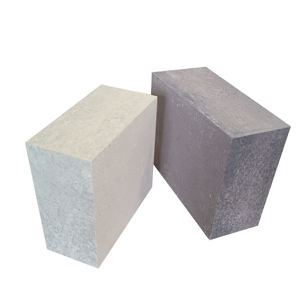Discover Premium Ceramic Products | Durability & Elegance United | Advanced Ceramics
1. Introduction
In the past 48 hours, the global advanced ceramics market has seen renewed investor interest following a major announcement by a leading U.S. materials supplier expanding its production of high-purity silicon carbide components for semiconductor and aerospace applications. This surge underscores the growing demand for performance ceramics like the silicon carbide crucible—a cornerstone in high-temperature processing. Whether you’re melting metals, firing pottery, or engineering next-gen heat shields, silicon carbide’s unmatched thermal stability and chemical resistance make it indispensable.

Silicon carbide crucibles are not just lab curiosities—they’re workhorses in foundries, research labs, and even artisanal kitchens. But their utility extends far beyond containment. From silicon carbide ceramic dinner plates to thermocouple protection tubes, this material bridges industrial rigor and everyday elegance. Let’s unpack what makes silicon carbide so versatile and why it’s increasingly preferred over alternatives like boron carbide or traditional alumina ceramics.
2. What Is a Silicon Carbide Crucible?
A silicon carbide crucible is a container made primarily from silicon carbide (SiC), engineered to withstand extreme temperatures—often exceeding 1600°C (2912°F)—without deforming or reacting with molten materials. Unlike graphite crucibles, which oxidize in air, silicon carbide crucibles maintain structural integrity in both oxidizing and reducing atmospheres. This makes them ideal for melting non-ferrous metals like aluminum, copper, and zinc, as well as for sintering advanced ceramics.
Manufacturers produce these crucibles using techniques like reaction bonding (RBSiC) or sintering, resulting in dense, thermally conductive, and shock-resistant vessels. The same RBSiC process is also used to create rbsic silicon carbide tile blocks and silicon carbide ceramic columns for industrial linings and support structures.
3. Silicon Carbide vs. Other Advanced Ceramics

When comparing boron carbide vs silicon carbide, the choice often hinges on application. Boron carbide is harder and used in armor and abrasives, but it’s more expensive and less thermally conductive. Silicon carbide, by contrast, offers an optimal balance of hardness, thermal conductivity, and cost-effectiveness—making it the go-to for crucibles, burner nozzles, and refractory bricks.
Silicon nitride is another high-performance ceramic, prized for its fracture toughness and thermal shock resistance. While a silicon nitride crucible factory might produce components for turbine blades or bearings, silicon nitride rings, plates, and custom silicon nitride heat shields serve niche roles where mechanical stress is critical. However, for pure thermal performance and chemical inertness at high heat, silicon carbide remains superior.
4. Beyond the Crucible: Everyday and Industrial Uses of Silicon Carbide Ceramics
Surprisingly, silicon carbide isn’t confined to factories. The rise of durable, non-toxic cookware has brought silicon carbide ceramic baking dishes into homes. Products like silicon carbide baking ceramic dish, silicon carbide ceramic casserole dish with lid, and even silicon carbide ceramic butter dish with lid combine aesthetic appeal with oven-to-table functionality. Brands like Staub have inspired demand for items such as silicon carbide baking dish staub-style pieces, though true silicon carbide dinnerware is often handcrafted for premium markets.
You’ll also find silicon carbide in kitchen essentials: silicon carbide ceramic dinner plates (available in white, black, and blue-white porcelain styles), silicon carbide ceramic salad bowls, pasta bowls, ramekins, and holiday-themed items like silicon carbide christmas ceramic platter. These aren’t just pretty—they’re scratch-resistant, microwave-safe, and retain heat exceptionally well.

5. Industrial Components: Pipes, Discs, and Furnace Parts
In heavy industry, silicon carbide shines in structural forms. Silicon carbide ceramic pipes and tubes—such as silicon carbide thermocouple protection tubes, silicon carbide porous ceramic tubes, and silicon carbide mullite tubes—are used in corrosive or high-heat environments like chemical processing and tube furnaces. Their low thermal expansion prevents cracking during rapid heating cycles.
Meanwhile, silicon carbide discs serve multiple roles: from silicon carbide ceramic grinding discs and sanding discs for pottery finishing to silicon carbide ceramic disc taps in plumbing. The material’s hardness ensures long life in abrasive or high-wear applications, including silicon carbide diamond grinding disc for pottery and silicon carbide piezo ceramic disc variants in sensors.
6. Market Trends and Material Innovation
The high purity silicon nitride powder market is growing, but silicon carbide remains dominant in cost-sensitive, high-volume applications. Innovations in forming techniques now allow for complex shapes like silicon carbide ceramic columns, silicon carbide ring seals, and even custom silicon carbide ceramic piping for semiconductor manufacturing.
Moreover, the line between industrial and consumer ceramics is blurring. Artisans use silicon carbide ceramic plates for painting due to their smooth, non-porous surface, while engineers specify silicon carbide brick linings for kilns that fire everything from pottery dishes to aerospace composites.
7. Conclusion
From the heart of a metal foundry to your holiday dinner table, the silicon carbide crucible symbolizes a material that transcends categories. Its blend of thermal resilience, chemical stability, and adaptability ensures its place across industries—and even in our kitchens. As demand for durable, high-performance ceramics grows, silicon carbide will continue to outperform alternatives, proving that sometimes, the toughest materials also bring the most beauty to everyday life.
Our Website founded on October 17, 2012, is a high-tech enterprise committed to the research and development, production, processing, sales and technical services of ceramic relative materials such as Silicon. Our products includes but not limited to Boron Carbide Ceramic Products, Boron Nitride Ceramic Products, Silicon Carbide Ceramic Products, Silicon Nitride Ceramic Products, Zirconium Dioxide Ceramic Products, etc. If you are interested, please feel free to contact us.
